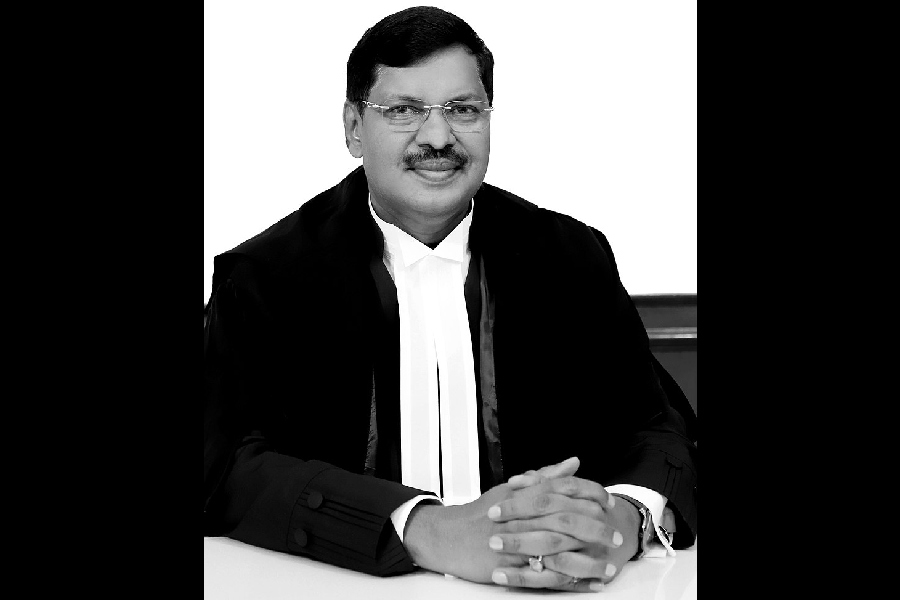
ASHOKA IN ANCIENT INDIA By Nayanjot Lahiri, Permanent Black and Ashoka University, Rs 895
Historical epistemology, when it is necessary to invoke it, requires that a reference is made to the sources of our knowledge about the past, because there can be no history without history's left-over fragments. Historians have long pondered the relative trustworthiness of these fragments, debated over the rigours of subjecting them to 'internal' and 'external' modes of criticism, and made such rigid classifications as 'rock-hard' ('pathure praman ' in Bengali), compared to more soft, pliable and often shunned as undependable evidence. The answer to the question 'What is History?' has kept changing with time, drastically altering our choice and understanding of sources, but perhaps our text-book adherence to categories of defined source and their relative dependability or otherwise lingers on in some form or the other.
A reference to this preliminary point about sources in this review was called for because in her exceptionally bold undertaking to write afresh on the personal life and persona of Mauryan emperor Ashoka, considered a model ruler by the nationalist statesmen of modern India, Professor Nayanjot Lahiri, actually breaks the barrier between 'hard' evidence and what would be considered as biased, but at the same time, does so by making a somewhat embarrassed homage to the 'hard' evidence of inscriptions, coins and similar sources, also used extensively and imaginatively throughout this work.
At the same time, the carefully worked-out design and the narrative strategy of the work, which differs significantly from the already available massive corpus of writings on the emperor, required an adventure with generally marginalized sources, not contemporary, nor official, emanating from the court of the emperor, but mostly hagiographic, retaining memories and legends of him mostly in Buddhist texts. But then, Lahiri shows by examining 'historical' biographies of other celebrated personalities such as Alexander and Cleopatra, the problem of authenticity will always remain.
It is not that earlier writings have not been adequately attentive to these writings, but a shift in the intentionality of the present project has helped in making certain points of focus sharper even in the use of more authentic sources. To mention only two: one, the point about Ashoka being an indefatigable communicator till almost the end of his life, seen in the context of public communication in contemporary cultures, acquires greater significance than before in this work.
The choice of the location of a very impressive number of imperial edicts for different types of audience, their drafting and engraving, the official apparatus deployed across the vast stretch of the empire for the execution of the work, the modes of communicating the messages - all reflect upon the emperor's personal urgency to efficiently have it organized. Second, the attempt to view the evolution of the emperor as an individual, as a monarch, and to pursue the formation of his personality has opened up an additional perspective. In addition to a historical survey of the period, a very substantial reconstruction of the cultural terrain of Ashoka's Jambudvipa (where Ashoka was born and became the emperor) has been undertaken on a scale not done before. This survey has been considerably enriched by in situ inspection of an enviable number of Ashokan edicts and monuments, bringing the author in touch with varied and sometimes esoteric landscapes. It seems that the author has spared no effort in trying to come to grips with the complexity of her subject. Clearly, the project has been very close to the author's heart.
Based on extensive and updated research, extending beyond the confines of the country, the narrative, cautiously drafted, is presented in an attractive style, and will surely be accorded immediate welcome by a wide range of readers: professional historians, students, and the enthusiastic reading public.
The reviewer would however end by sounding two words of caution. Despite her occasional warnings, the actual juxtaposition of what is legitimately derived from evidence ("The Emperor's Voice") with what is largely imagined ("Of Wifely Woes and the Emperor's Death") somehow tends to slide towards the imagined as legitimate in a country in which the politics of the past grows more and more virulent and violent day by day. Second, the author cites R.G. Collingwood's 'Historical Imagination' in the beginning of the book apparently approvingly, but 'imaginations' are many and to be 'historical', intervention in the form of 'craft' is what can prevent the return of 'good king', 'bad queen' kind of history as also every individual from exercising his/her privilege (and being violent about it) of creating multiple imagined pasts and their 'values'.











